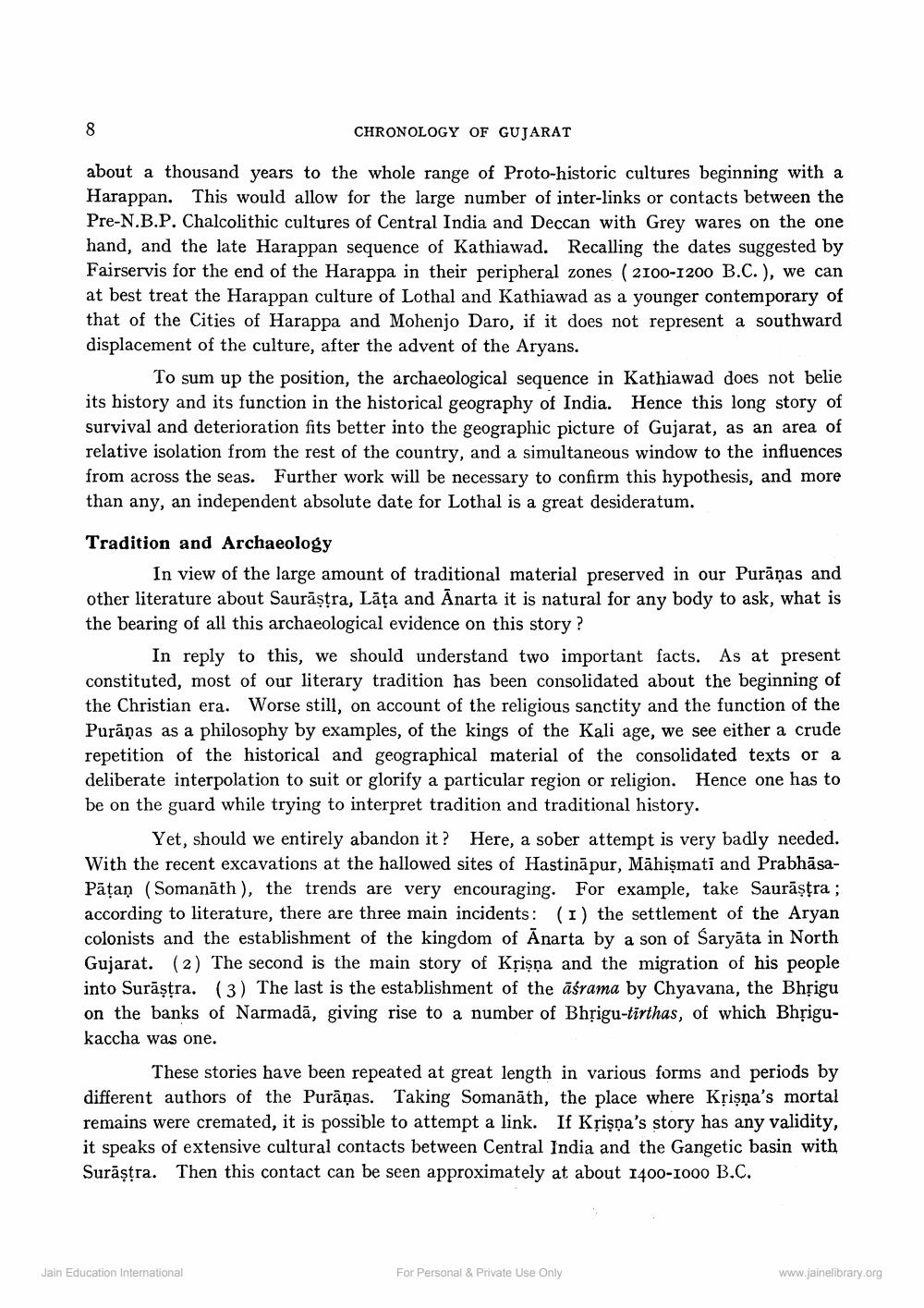________________
CHRONOLOGY OF GUJARAT
about a thousand years to the whole range of Proto-historic cultures beginning with a Harappan. This would allow for the large number of inter-links or contacts between the Pre-N.B.P. Chalcolithic cultures of Central India and Deccan with Grey wares on the one hand, and the late Harappan sequence of Kathiawad. Recalling the dates suggested by Fairservis for the end of the Harappa in their peripheral zones ( 2100-1200 B.C.), we can at best treat the Harappan culture of Lothal and Kathiawad as a younger contemporary of that of the Cities of Harappa and Mohenjo Daro, if it does not represent a southward displacement of the culture, after the advent of the Aryans.
To sum up the position, the archaeological sequence in Kathiawad does not belie its history and its function in the historical geography of India. Hence this long story of survival and deterioration fits better into the geographic picture of Gujarat, as an area of relative isolation from the rest of the country, and a simultaneous window to the influences from across the seas. Further work will be necessary to confirm this hypothesis, and more than any, an independent absolute date for Lothal is a great desideratum.
Tradition and Archaeology
In view of the large amount of traditional material preserved in our Purāṇas and other literature about Saurāṣtra, Lāța and Anarta it is natural for any body to ask, what is the bearing of all this archaeological evidence on this story?
In reply to this, we should understand two important facts. As at present constituted, most of our literary tradition has been consolidated about the beginning of the Christian era. Worse still, on account of the religious sanctity and the function of the Purāṇas as a philosophy by examples, of the kings of the Kali age, we see either a crude repetition of the historical and geographical material of the consolidated texts or a deliberate interpolation to suit or glorify a particular region or religion. Hence one has to be on the guard while trying to interpret tradition and traditional history.
Yet, should we entirely abandon it? Here, a sober attempt is very badly needed. With the recent excavations at the hallowed sites of Hastināpur, Māhismati and PrabhāsaPāțan (Somanāth), the trends are very encouraging. For example, take Saurāṣtra ; according to literature, there are three main incidents: (1) the settlement of the Aryan colonists and the establishment of the kingdom of Ānarta by a son of Saryāta in North Gujarat. (2) The second is the main story of Kțişņa and the migration of his people into Surāṣtra. (3) The last is the establishment of the āśrama by Chyavana, the Bhțigu on the banks of Narmadā, giving rise to a number of Bhộigu-tirthas, of which Bhrigukaccha was one.
These stories have been repeated at great length in various forms and periods by different authors of the Purāṇas. Taking Somanāth, the place where Krişna's mortal remains were cremated, it is possible to attempt a link. If Krişna's story has any validity, it speaks of extensive cultural contacts between Central India and the Gangetic basin with Surāṣtra. Then this contact can be seen approximately at about 1400-1000 B.C.
Jain Education Intemational
For Personal & Private Use Only
www.jainelibrary.org




